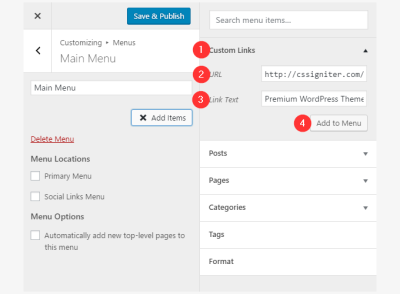Running a fitness center or gym today isn’t just about having great equipment and trained staff—it’s also about making it easy for members to book classes, personal training sessions, and other services. The right WordPress booking plugin can streamline your scheduling process, reduce no-shows, and improve overall member satisfaction. But with so many options out there, how do you pick the perfect one? In this guide, we’ll walk you through what to consider so you can choose a booking plugin that fits your gym’s unique needs and helps your business thrive.
Key Features to Look for in a WordPress Booking Plugin for Gyms

When selecting a booking plugin for your fitness center, there are some essential features that can make a big difference in how smoothly your operations run. Here’s a quick rundown of what to keep an eye on:
- Easy Scheduling and Calendar Management: The plugin should offer a user-friendly calendar interface for both staff and members, allowing seamless booking and management of classes, sessions, and facilities.
- Multiple Service Types: Your gym likely offers various services—group classes, personal training, massage therapy, etc. The plugin should support different service types with customizable durations and prices.
- Automated Notifications: Sending automatic reminders via email or SMS helps reduce no-shows and keeps members informed about their upcoming appointments.
- Payment Integration: Secure and flexible payment options, including credit cards, PayPal, or other gateways, are essential for pre-booked sessions and membership payments.
- Member Management: Look for features that allow easy management of member profiles, booking history, and preferences to personalize the experience.
- Mobile Responsiveness: Since many users book on their phones, your plugin should work flawlessly on mobile devices, offering a smooth booking experience.
- Customization and Branding: The ability to customize the booking forms and interface to match your gym’s branding makes the experience more professional and cohesive.
- Integration Capabilities: Your plugin should seamlessly integrate with other tools you’re using, like email marketing services, CRM systems, or fitness management software.
- Reporting and Analytics: Insights into your bookings, revenue, and popular classes can help you refine your offerings and marketing strategies.
Choosing a plugin with these features ensures that your scheduling process is efficient, your members enjoy a hassle-free experience, and your staff can focus more on delivering excellent fitness services. Remember, the best plugin for your gym is one that aligns with your specific needs, budget, and growth plans.
3. Top WordPress Booking Plugins for Fitness Centers and Gyms
Finding the perfect booking plugin for your fitness center or gym can feel overwhelming with so many options out there. Luckily, some stand out because of their features, ease of use, and reliability. Let’s take a closer look at the top WordPress booking plugins that are making waves in the fitness industry right now.
Amelia: This plugin is a favorite for many gym owners because of its sleek interface and comprehensive features. It allows clients to book classes, appointments, or personal training sessions seamlessly. The automation features, like notifications and reminders, save you tons of time. Plus, Amelia integrates well with payment gateways, so you can accept payments upfront or at the time of booking.
Bookly: Known for its flexibility, Bookly offers a user-friendly experience for both staff and clients. It supports multiple services, staff members, and locations, which is perfect if your gym has several trainers or branches. The plugin also provides customizable booking forms and real-time availability updates. The free version is pretty robust, but the paid add-ons unlock even more powerful capabilities.
SimplyBook.me: If you’re looking for a scalable solution, SimplyBook.me is a great choice. It offers a variety of customization options, including branded booking pages, promotional features, and integrations with popular calendar apps. It’s especially useful if your gym hosts a range of classes or memberships, as it can manage complex scheduling needs.
Bookeo: This plugin is particularly strong in managing different types of bookings—like classes, appointments, or events. It also supports group bookings and membership management, making it ideal for gyms that want to offer flexible options. The interface is intuitive, and it offers detailed reporting to help you track your bookings and revenue.
Ultimately, the best plugin for your gym depends on your specific needs—whether it’s simple appointment scheduling or managing a complex class timetable. All these plugins are reliable choices that can help streamline your operations and improve your clients’ experience.
4. Comparing the Best Booking Plugins: Pros and Cons
| Plugin | Pros | Cons |
|---|---|---|
| Amelia |
|
|
| Bookly |
|
|
| SimplyBook.me |
|
|
| Bookeo |
|
|
When choosing among these plugins, think about what features are most important for your gym. Do you need simple appointment booking, or are you managing multiple classes, memberships, and different staff? Also, consider your budget, as some plugins offer more free features than others, but the full experience often comes with a paid plan.
In the end, all of these plugins are designed to help you deliver a smoother booking experience for your clients while saving you time and hassle. Take advantage of free trials or demos if available, and find the one that feels like the best fit for your fitness community.
5. How to Install and Set Up Your WordPress Booking Plugin
Ready to get your booking system up and running? Installing a WordPress booking plugin is usually straightforward, and I’ll walk you through the process step-by-step so you can start accepting reservations in no time.
Step 1: Choose Your Plugin
First things first, pick the right plugin for your fitness center or gym. Popular options like Bookly, Amelia, or Simply Schedule Appointments are user-friendly and packed with features. Make sure to check if the plugin supports your specific needs — like class scheduling, membership management, or payment integrations.
Step 2: Install the Plugin
- Login to your WordPress dashboard.
- Navigate to Plugins > Add New.
- Use the search bar to find your chosen plugin (e.g., “Bookly”).
- Click Install Now, then Activate.
Step 3: Configure Basic Settings
Once activated, most plugins will add a new menu item in your dashboard. Click on it to start setup. Here’s what you typically need to do:
- Set your business hours — specify when your gym is open.
- Add your services — classes, personal training sessions, or memberships.
- Configure staff profiles if your system supports multiple trainers or staff members.
- Set up notifications — email or SMS alerts for bookings, cancellations, or reminders.
Step 4: Integrate Payment Options
If you want customers to pay online, connect your preferred payment gateways like PayPal, Stripe, or other options supported by your plugin. Usually, this involves entering API keys or account details in the plugin settings.
Step 5: Embed the Booking Form
Finally, add the booking interface to your website:
- Most plugins provide a shortcode or block that you can insert into pages or posts.
- Create a dedicated “Book Now” page.
- Paste the shortcode or use the block editor to add the booking widget.
- Publish your page and test the booking process from a customer’s perspective.
Pro Tip:
Take some time to explore the plugin’s documentation or support forums. Many plugins offer tutorials, video guides, and troubleshooting tips that can make setup smoother.
6. Tips for Optimizing Your Booking System for Better Customer Experience
Once your booking system is live, the goal is to make it as seamless and friendly as possible. Here are some practical tips to optimize the experience for your customers and encourage more reservations.
1. Keep the Booking Process Simple
Reduce the number of steps to book a session. The fewer clicks and forms your customers need to fill out, the better. Enable guest checkout options so visitors don’t have to create an account unless they want to.
2. Clearly Display Availability
Make sure your calendar shows real-time availability. Use color-coded indicators for fully booked slots versus open ones. This transparency builds trust and reduces frustration.
3. Send Automated Reminders
Set up automatic notifications via email or SMS to remind clients of upcoming appointments. This helps reduce no-shows and keeps your clients engaged.
4. Offer Flexible Payment Options
Allow customers to pay online or at the gym. Supporting multiple payment methods and currencies can broaden your reach and accommodate different preferences.
5. Mobile Optimization is Key
Ensure your booking system looks great and functions well on smartphones and tablets. Most modern plugins are responsive, but it’s worth testing the booking flow on different devices.
6. Collect Feedback and Make Improvements
After a booking, ask clients for feedback on their experience. Use this input to refine the process, fix any issues, and add features your customers want.
7. Regularly Update Your Plugin
Keep your booking plugin updated to the latest version. Updates often include security patches, new features, and performance improvements that can enhance the user experience.
8. Provide Clear Contact Information
Make it easy for clients to reach you if they encounter issues or have questions. Include a contact form, phone number, or chat support on your booking page.
By following these tips, you’ll create a smooth, professional, and customer-friendly booking experience that encourages repeat business and helps your fitness center stand out!
Conclusion and Final Recommendations for Fitness Centers
Choosing the right WordPress booking plugin is essential for fitness centers and gyms aiming to streamline their scheduling, improve customer experience, and boost operational efficiency. After evaluating various options, it’s clear that a plugin with robust features such as real-time availability, easy customization, and integrated payment options can significantly enhance your booking process. Ensuring the plugin is user-friendly and mobile-responsive will also help attract more clients and reduce no-shows. Additionally, consider plugins that offer automated reminders and analytics to monitor performance and improve your services over time.
Some top contenders include plugins like Bookly, Amelia, and WP Simple Booking Calendar. Each offers unique features tailored to different needs: from simple class scheduling to comprehensive appointment management. To make an informed decision, evaluate your specific requirements, such as the number of staff members, types of services offered, and your budget.
In summary, investing in a reliable booking plugin will not only save time but also enhance client satisfaction, leading to increased retention and revenue. Take the time to compare features, read reviews, and perhaps try demos before committing. Your choice should align with your gym’s growth plans and customer expectations, ensuring seamless integration into your existing website and operations.


